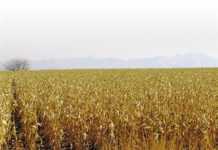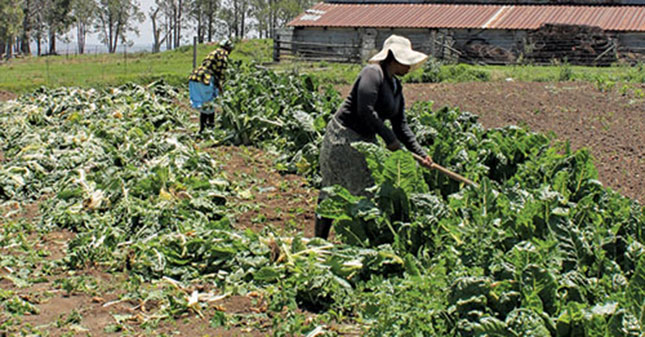
Photo: Courtesy of SA Stud Book
What does the ICAR Certificate of Quality entail?
The SA Stud Book is the only organisation in the southern hemisphere to obtain ICAR accreditation for all departments and species. This means international recognition of the quality of the services rendered by an ICAR member. It comprises a unique mark identifying product and service quality for members who meet or exceed the published recording guidelines. The designation will identify a member’s conformance to globally recognised standards as well as a time approval period, ensuring customers that the service provider has routinely met the ICAR criteria.
READ:Dormer sheep breed: Origin and history
What does it mean for Stud Book animal recording in Southern Africa?
It means that service providers in the field of animal recording are periodically tested against internationally accepted norms on the quality of their work. This provides an assurance to customers of these service providers. For SA Stud Book in particular, it means, firstly, an independent acknowledgement of the quality of the services it provides to its clients and secondly, an opportunity for the management of Stud Book to be advised on recent developments in the methods currently used.
Tell us more about the criteria for the Certificate of Quality.
Achieving the ICAR CoQ implies that the applicant must deliver proof of its compliance with all the published recording guidelines. The guidelines for 2012 are provided in a bound volume of 580 pages. These cover almost all animal recording activities, generally in great detail, and are continually updated as the technology and science of animal recording evolves.
How does SA animal recording compare with international standards?
Animal recording is a growing science and we need to keep abreast of developments worldwide. We are keen to learn from our international peers, some of whom render really exceptional services.
Why is animal recording so important?
The recording of parentage, ownership and production is a necessity for the improvement of animal production.
This is primarily through the genetic improvement of the production potential of animals and the advantages this can deliver for management. A well-structured programme, regardless of its scale, is the hallmark of a healthy and sustainable animal agricultural sector in a country.
In what way does animal recording contribute to food security?
Animal recording plays a vital role in the genetic improvement of the production potential of farm animals, which has a direct bearing on food security. The published genetic trends, positive for most of our livestock breeds, serve as proof that these breeds are indeed being genetically improved to produce more food, more efficiently.
Tell us more about the history of animal recording in South Africa.
The recording of the parentage, pedigrees and ownership of farm livestock in South Africa started in 1906 with the establishment of the SA Stud Book Association. The formal recording of the production traits of farm livestock in South Africa started in 1959 and SA Stud Book became involved in the production recording and genetic evaluation of farm animals in January 2012.
Is animal recording restricted to the stud breeding industry or are commercial herds also included?
Animal recording is not only intended for pure-bred animals, as was the case in South Africa years ago. More commercial animals are recorded for parentage, ownership and production traits than pure-bred animals. And if the wider application of animal recording globally is considered (ownership, movement, disease and similar factors), then the number of pure-bred animals “recorded” becomes almost insignificant. Animal recording has much wider application than just animal improvement.
How can a commercial breeder benefit from animal recording?
Commercial breeders can benefit directly, indirectly or not at all. Hundreds of commercial producers currently participate in formal animal recording and reap direct benefits through genetic improvement and excellent value-added management information. Commercial producers buy and use genetically superior breeding material, provided by stud breeders, as regular inputs to their enterprises without participating in the formal animal improvement processes.
So indirectly they reap the benefits through the improved quality of their breeding animals and the superior production capacity of these animals’ offspring. Unfortunately, there are still many producers who do not benefit, but that is mostly a matter of choice.
What about developing farmers?
They fall in the same situation, more or less. In their case, however, ignorance and lack of institutional support from governmental structures is an exacerbating factor.
Under which legislation does animal recording fall and what are the legal requirements?
Aspects of animal recording are addressed by the Animal Improvement Act (No. 62 of 1998), some by the Animal Identification Act (No. 6 of 2002), and others by the Animal Heath Act (No. 7 of 2002) and similar legislation. But these address only certain aspects, such as pure-bred breeding and animal movement, and do not have any real effect on the results of formal animal recording.
Tell us more about the latest developments and trends in animal recording.
There are several “hot topics” internationally. Genomic selection is one. All aspects are being explored, from basic scientific requirements and processes to practical application and results of the first national and international evaluations.
Food safety, human health and animal welfare are others. The recording and application of animal health data are evolving rapidly and are bound to bring significant benefits to both producers and consumers of animal products in the countries where these activities are pursued actively.
Contact SA Stud Book on 051 410 0900 or email [email protected].
This article was originally published in the 05 July 2013 issue of Farmer’s Weekly.













